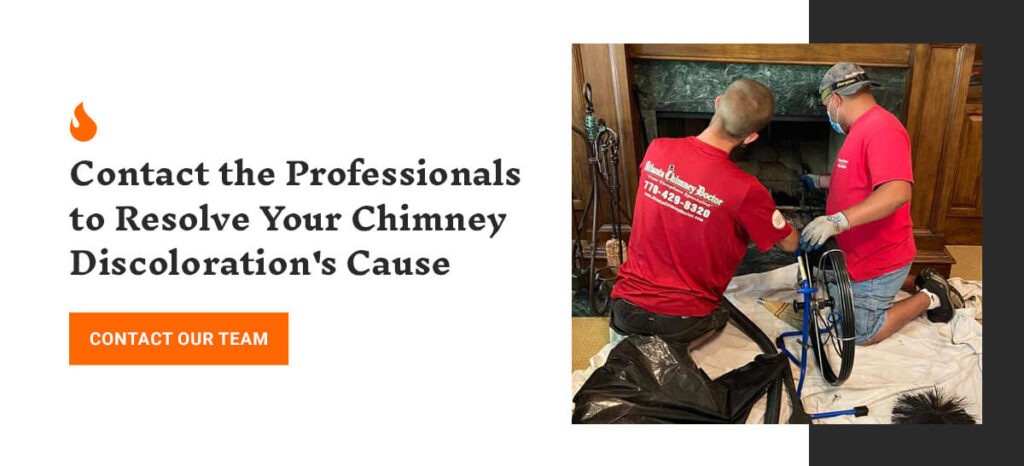Chimney discoloration may be predictable, but there’s often an underlying cause that could lead to long-term issues. Knowing what to look for could save you from potentially costly repairs. Having your chimney cleaned and maintained regularly by a professional is the best approach for minimizing problems and enhancing your chimney’s longevity.
What Causes Chimney Discoloration?
These are the most common types of chimney discoloration and their causes.
Creosote Buildup
Black and brown stains along the sides and top of the chimney could be an accumulation of creosote in the flue from a lack of cleaning. The buildup could lead to draft blockages, excessive smoke and unsightly black brick discoloration on the exterior. It’s best to hire a professional chimney sweep to remove creosote safely.
Efflorescence
White, powdery discolorations on your chimney’s interior are water-soluble salt deposits from its masonry. These stains indicate that water has made its way into the masonry and carried these salts to the surface in a process known as efflorescence, which could indicate a leak. You must replace the affected bricks. Otherwise, the water will expand and contract within the masonry and lead the bricks to weaken, break or collapse.
Mold and Mildew
Green, dark green or blueish chimney stains indicate algae, mold or mildew. These fungi thrive in dark, damp conditions, triggering allergies and respiratory problems. When you spot them, it’s best to call a chimney expert to identify leaks and remove these contaminants safely.
Rust and Corrosion
Chimney caps and other metal surfaces rust when in contact with water, which could result in brown, red or orange discoloration on your chimney chase. Rust usually signifies a leak, so you’ll need a seasoned service provider to inspect your chimney for potential issues.
How to Identification Chimney Stain Causes
Pinpointing the potential causes of your chimney discoloration from the ground can be challenging, but you can begin by identifying the following stain characteristics:
- Color
- Size
- Location
Scaling the roof or chimney yourself is dangerous and could lead to injury, so it’s best to call an experienced chimney maintenance company to conduct a thorough inspection.
Why Regular Chimney Maintenance Is Important
A clean and well-maintained chimney offers several benefits, including:
- Letting harmful toxins, smoke and fumes escape
- Heating your home more efficiently
- Reducing wear and tear to prevent expensive repairs
Contact the Professionals to Resolve Your Chimney Discoloration’s Cause
Enlisting a professional to inspect and maintain your chimney will go a long way toward keeping your home and family safe and ensuring your chimney functions properly for years to come. With over 30 years of experience, Atlanta Chimney Doctor has the expertise to identify and resolve issues related to chimney stains quickly. Contact our expert team to request a service today!

